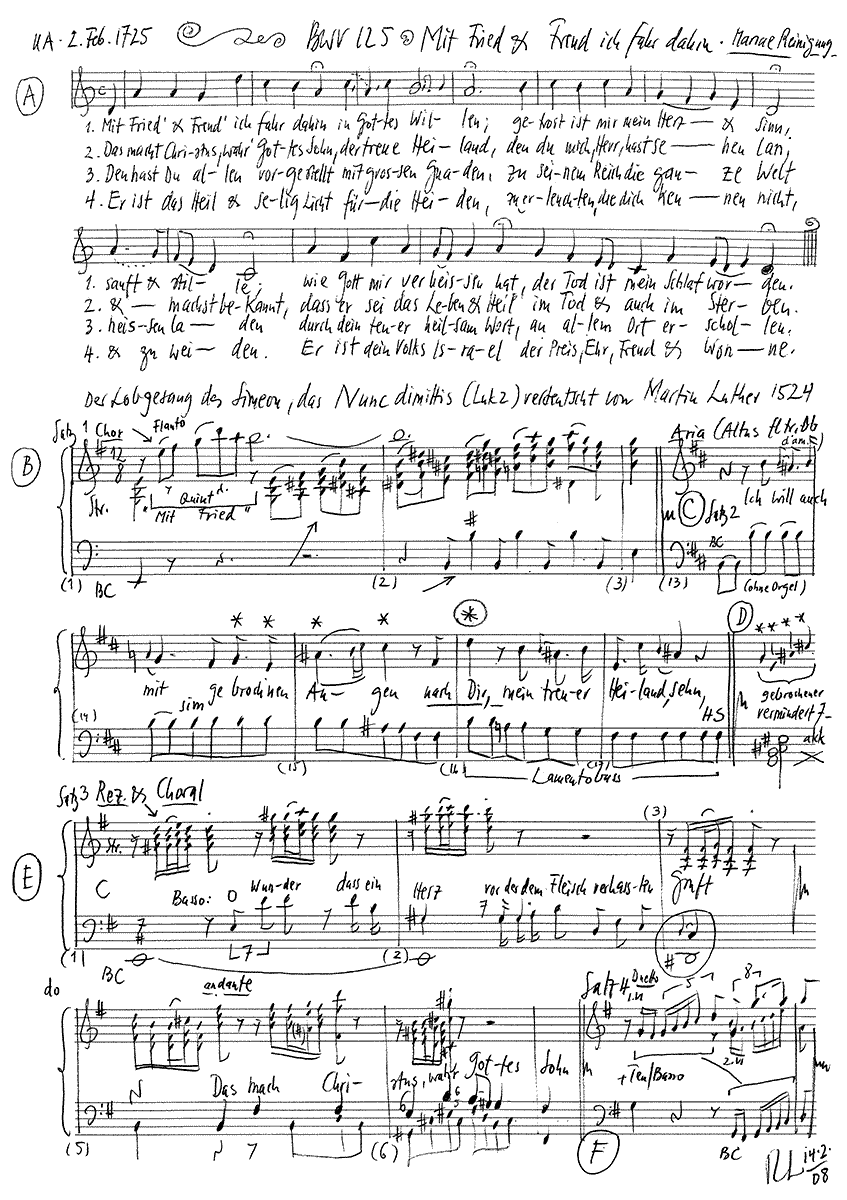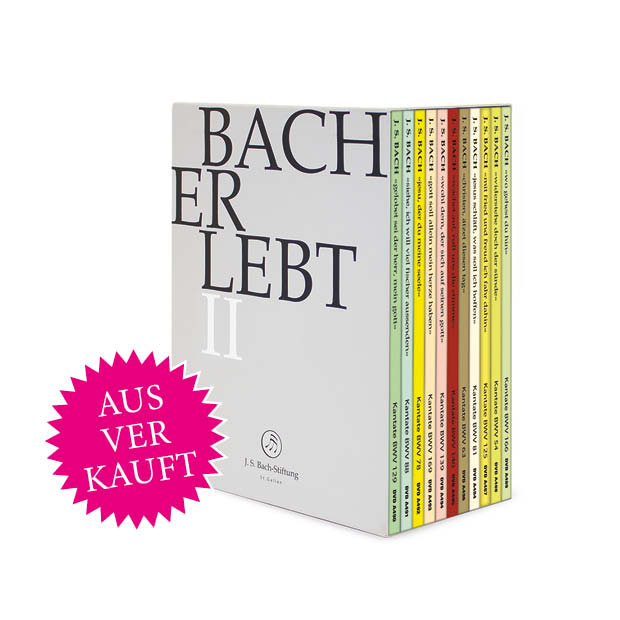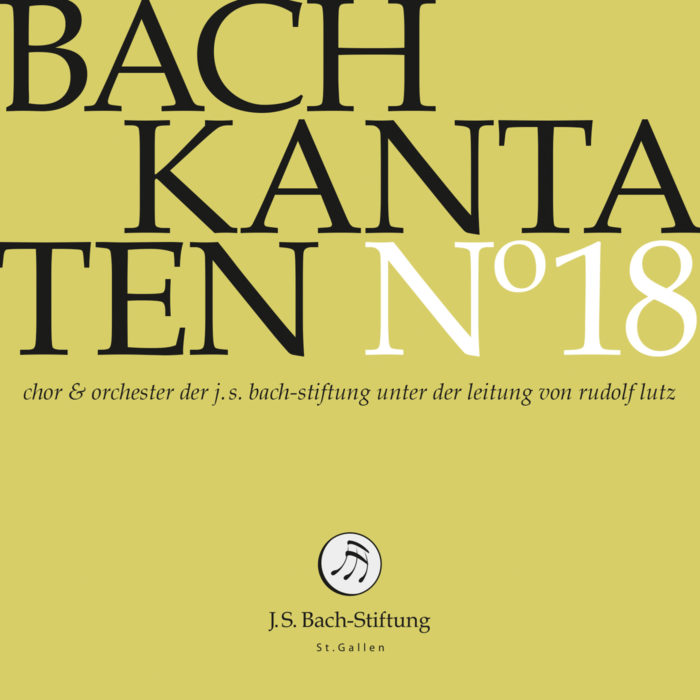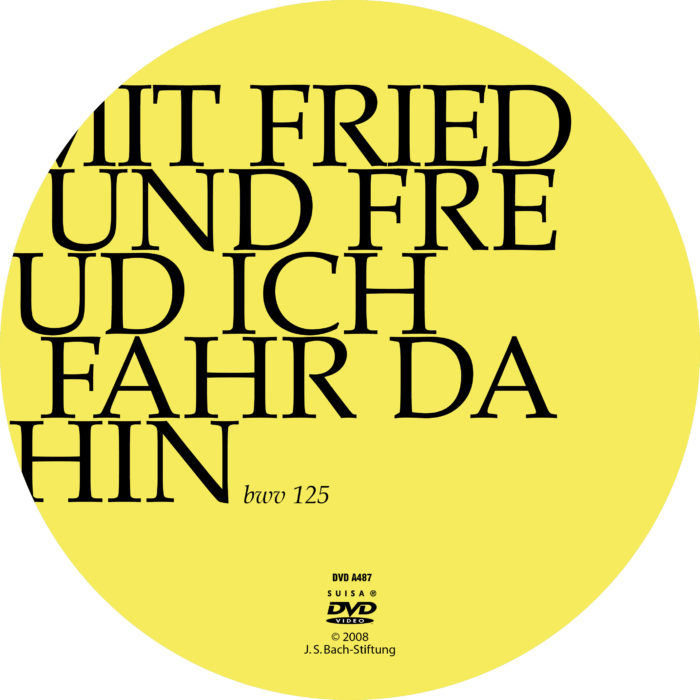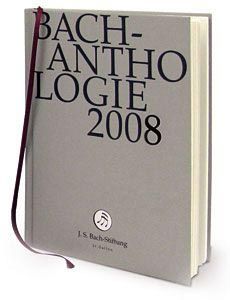Mit Fried und Freud ich fahr dahin
BWV 125 // For the Purification of the Blessed Virgin Mary
(In peace and joy do I depart) for alto, tenor and bass, vocal ensemble, horn, flute, oboe d’amore, strings and continuo.
Throughout his chorale cantata project for the 1724/25 church year, Bach was not only required to compose compositions for the regular Sunday services, but also a hymn-based cantata for the Marian Feasts and other special occasions. One such event was the Feast of the Purification of the Virgin on 2 February, at the end of the Epiphany season, for which Bach composed cantata BWV 125. The celebratory character of the feast is drawn from the gospel story of Simeon the Elder, who received the prophesy that he would not see blessed death until he embraced the new-born saviour. Indeed, the associated Canticle of Simeon (“Now, Lord, you let your servant go in peace”) was a frequently selected text for funeral music, as it presents a distinctive relationship between acceptance of death and the assurance of salvation. And the canticle not only forms the basis of Luther’s paraphrase of the hymn “In peace and joy do I depart” but also the freely versified movements of the cantata; the libretto thus represents a new adaptation of two key Lutheran texts.
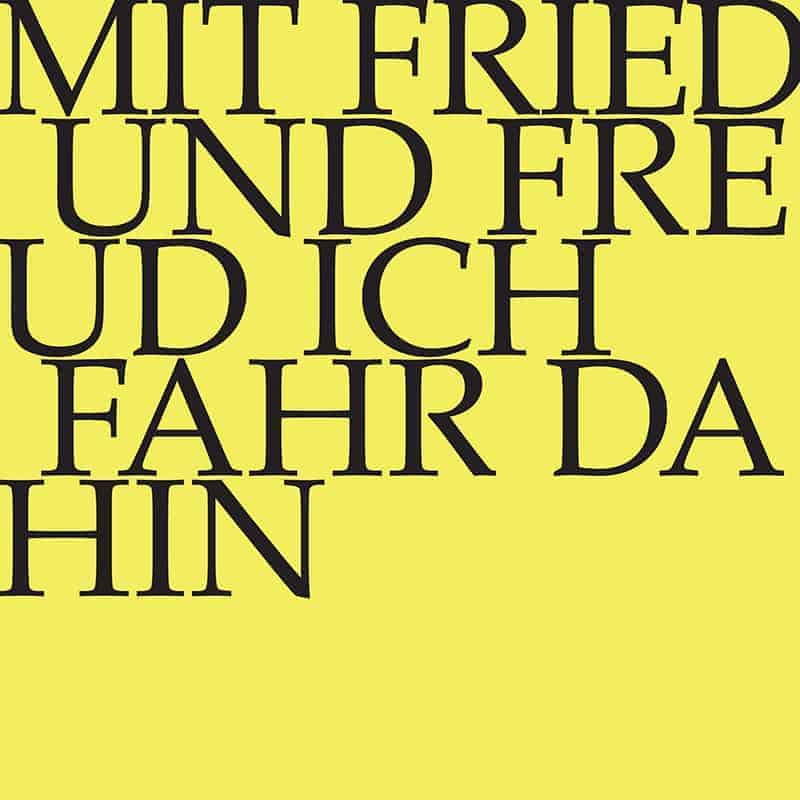
Would you like to enjoy our videos ad-free? Subscribe to YouTube Premium now...
Workshop
Reflective lecture
Choir
Soprano
Susanne Frei, Guro Hjemli, Jennifer Rudin
Alto
Antonia Frey, Olivia Heiniger, Jan Börner
Tenor
Walter Siegel, Marcel Fässler, Nicolas Savoy
Bass
Fabrice Hayoz, Philippe Rayot, William Wood
Orchestra
Conductor & cembalo
Rudolf Lutz
Violin
Renate Steinmann, Livia Wiersich
Viola
Susanna Hefti
Violoncello
Maya Amrein
Violone
Iris Finkbeiner
Oboe d’amore
Kerstin Kramp
Transverse flute
Claire Genewein
Corno
Olivier Picon
Organ
Norbert Zeilberger
Musical director & conductor
Rudolf Lutz
Workshop
Participants
Karl Graf, Rudolf Lutz
Reflective lecture
Speaker
Martin Meyer
Recording & editing
Recording date
02/15/2008
Recording location
Trogen
Sound engineer
Stefan Ritzenthaler
Director
Meinrad Keel
Production manager
Johannes Widmer
Production
GALLUS MEDIA AG, Switzerland
Producer
J.S. Bach Foundation of St. Gallen, Switzerland
Librettist
Text No. 1, 3, 6
Martin Luther, 1524
Text No. 2, 4, 5
Rearrangement by an unknown writer
First performance
Purification of St. Mary the Virgin,
2 February 1725
In-depth analysis
In the introductory chorus, Bach presents an elegiac and “quiet” setting that expresses not only the relief of the departed, but also the grief of the mourners. In a gently swinging 12⁄ 8 setting, the strings and the bleak, Passionlike timbre of the transverse flute and oboe enshroud the subdued vocal lines. The translucent, fragile movement reaches its musical climax on the words “calm and quiet” and in the rendering of the “eternal slumber” in the closing lines of the hymn.
This mood is sustained in the alto aria, although the librettist subjectively reframes the main statement by recasting the canticle text of “For mine eyes have seen thy salvation” as the “broken vision” of those who have yet to die. This moment, at once both ecstatic and resigned, is musically underscored by the bare whisper of a woodwind duet and a sparse, lightly moving bass line that Bach clearly marked “Ligato per tutto e senza accompagnato” to prevent the addition of chords – life was audibly hanging by a silk thread. In this reverent miniature, Bach realised a veritable Ars moriendi, one that is fittingly set in the B minor key of the “Erbarme dich!” aria from the St Matthew Passion.
The ensuing bass recitative, by contrast, is structured as a two-tiered dialogue in which the chorale text, skilfully inserted between the expository passages, is given potent expression. In this setting, it is plain to hear that Bach attributed considerable power to the chorale, even in a period that was strongly influenced by courtly elegance: evidently the comments in his “Draft for a Well-Appointed Church Music…” of 1730 on the “former style of music … that no longer pleases our ears”, were not aimed at the chorale as such, but only at outmoded ideals regarding form and performance practice.
The tenor and bass duet embedded in an edgy trio setting obeys a reversal typical for Bach: The “light” in the Canticle of Simeon that “hath filled the orb of all the earth now”, is musically transformed from a bare metaphor to an elementary force of heart-stopping power. With his inimitably tangible grasp of theology, Bach succeeds in converting this musical foretaste of heaven into a hope that inspires the soul. As such, the “echoing” message of the middle section points the way from death back to life in a vocal and instrumental setting that makes a positively electrifying promise: “In faith shall all be blessed”.
The short but weighty alto recitative reinforces this promise by reflecting on the power of redemption; the mention of the “throne of mercy” and “grace” highlights two key terms of the Lutheran doctrine of justification through faith.
With the chorale verse “He is that grace and blessed light”, Bach pays the venerated Lutheran hymn its due justice. Indeed, the authoritative and uniting force of the chorale, upheld through the age-old tradition of congregational singing, lends the cantata a dimension of timelessness. Here, the horn part underscores the soprano line, lending the vocalists a robust force: Luther, in his lifelong struggle with the devil, pope and temptation, would no doubt have happily availed himself of such support.
Libretto
1. Chor
Mit Fried und Freud ich fahr dahin
in Gottes Willen;
getrost ist mir mein Herz und Sinn,
sanft und stille;
wie Gott mir verheißen hat,
der Tod ist mein Schlaf worden.
2. Arie (Alt)
Ich will auch mit gebrochnen Augen
nach dir, mein treuer Heiland, sehn.
Wenngleich des Leibes Bau zerbricht,
doch fällt mein Herz und Hoffen nicht.
Mein Jesus sieht auf mich im Sterben
und lässet mir kein Leid geschehn.
3. Rezitativ und Choral (Bass)
O Wunder, daß ein Herz
vor der dem Fleisch verhaßten Gruft
und gar des Todes Schmerz
sich nicht entsetzet!
Das macht Christus, wahr’ Gottes Sohn,
der treue Heiland,
der auf dem Sterbebette schon
mit Himmelssüßigkeit den Geist ergötzet,
den du mich, Herr, hast sehen lan,
da in erfüllter Zeit ein Glaubensarm
das Heil des Herrn umfinge;
und machst bekannt
von dem erhabnen Gott,
dem Schöpfer aller Dinge,
daß er sei das Leben und Heil,
der Menschen Trost und Teil,
ihr Retter vom Verderben
im Tod und auch im Sterben.
4. Arie (Duett Tenor, Bass)
Ein unbegreiflich Licht erfüllt
den ganzen Kreis der Erden.
Es schallet kräftig fort und fort
ein höchst erwünscht Verheißungswort:
wer glaubt, soll selig werden.
5. Rezitativ (Alt)
O unerschöpfter Schatz der Güte,
so sich uns Menschen aufgetan:
Es wird der Welt,
so Zorn und Fluch auf sich geladen,
ein Stuhl der Gnaden
und Siegeszeichen aufgestellt,
und jedes gläubige Gemüte
wird in sein Gnadenreich geladen.
6. Choral
Er ist das Heil und selge Licht
für die Heiden,
zu erleuchten, die dich kennen nicht,
und zu weiden.
Er ist deins Volks Israel
der Preis, Ehr, Freud und Wonne.



